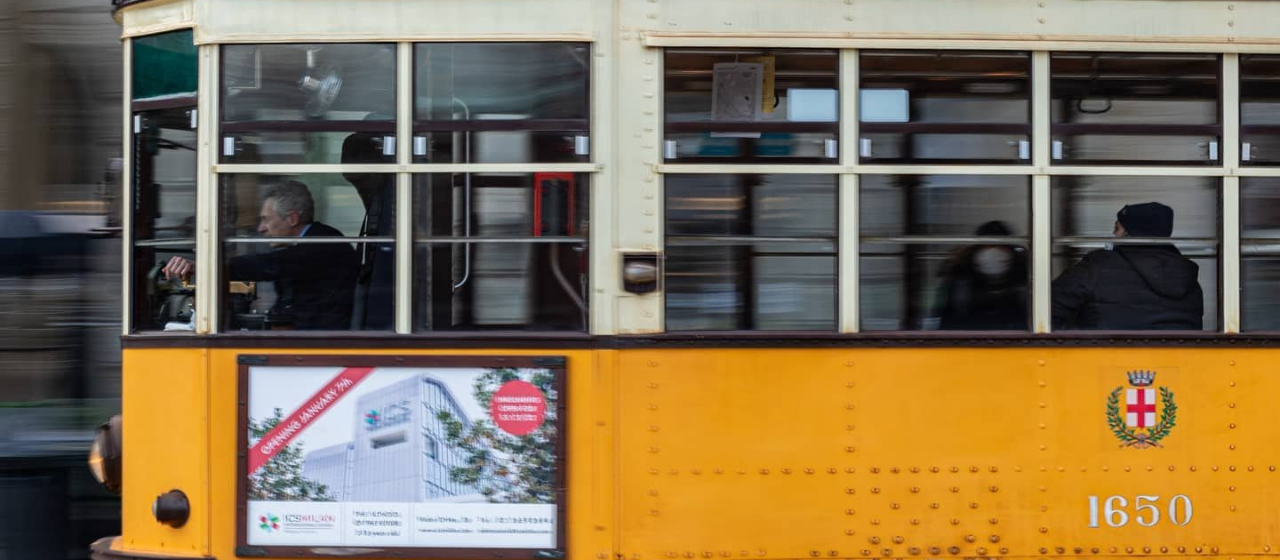YesMilano Wire, update April 4th 2021
This week: public transportation; the Olympic transformation of Scalo Romana; Milano’s financial marketplace

Every week, three news items on the upcoming future of Milano and its metro community.
The mayors of Milano and San Francisco, Giuseppe Sala and London N. Breed, respectively, have penned a joint editorial in the pages of Fortune magazine, the U.S. business publication that ranks international corporations, commenting positively on Joseph Biden’s infrastructure plan, which will build new bridges and increase funding for public transportation. The Lombard city and the Californian city, both in love with tramways, are part of the C40 network that links major global cities around the world on issues of climate governance and municipal sustainability. Now the two mayors have come out strongly in voicing their commitments to expand investment in public transportation and green mobility systems at a large symposium organized by the transit workers’ international federation. Thus, Beppe Sala writes about the city’s approach, which has redoubled efforts to complete the fifth subway line and supported the underground and over-ground public transit network, in spite of the pandemic: “In Milan, we know how crucial a resilient and well-resourced mass transit system is to urban life. Public transport is key to not only our economic recovery, but also essential in supporting the social fabric of the city. Cheap, reliable, and environmentally friendly public transport systems help cut emissions from traffic, support diverse communities, and enable workers to reach their jobs delivering essential services—all while allowing visitors to explore our historic city.”
The winning project for the masterplan of Scalo Romana, the large area of disused railway tracks between Porta Romana and Fondazione Prada, which will host the Olympic Village for the 2026 Winter Olympics and a new, huge and luscious park, has been revealed. The urban transformation will link piazzale Lodi to piazza Trento and via Ripamonti, creating a brand-new neighborhood adjacent to the largest Italian institution for contemporary art, which has attracted so much interest abroad since its opening in 2015, the year of the Expo. As Mayor Sala writes in his post on Facebook: “In the Milan of tomorrow, the Porta Romana district will be increasingly dynamic, green and young, and will help develop the south of the city. (...) I am sure of it today, after the announcement of the winning project for the regeneration of the Scalo Romana yard: it is called 'Parco Romana' and feature a major green area, eco-zones, a suspended forest, courtyards, residential buildings, working spaces and connections. (..) It is therefore a project that meets our idea of a polycentric, green and sustainable city and demonstrates strong attention to the needs of urban living that the Milanese have been expressing for some time." The Outcomist project, which sees the Diller Scofidio + Renfro studio working together with Carlo Ratti Associates and is supported by Coima, Covivio and Prada Holding, will be submitted to a consultation with local residents to arrive at the final version.
Reuters notes that after Brexit, the City of London has lost the European Union’s financial passport that allowed it to settle transactions in European government bonds and company shares and other EU financial assets. As a consequence, international banks and fund managers have already moved more one trillion euros in assets in their care to the Continental bloc, taking 7,500 jobs to new EU financial hubs along with them. Milan, along with Paris, Frankfurt and Amsterdam, is well positioned to take advantage from this reshuffling in the international financial industry. In fact, according to the Daily Telegraph, the Bourse of Milan has already seen its volume of trading in EU shares increase by more than 20% after the finalization of Brexit, from €2.18 billion in December 2020 to 2.65 billion in January 2021

 Log in
Log in